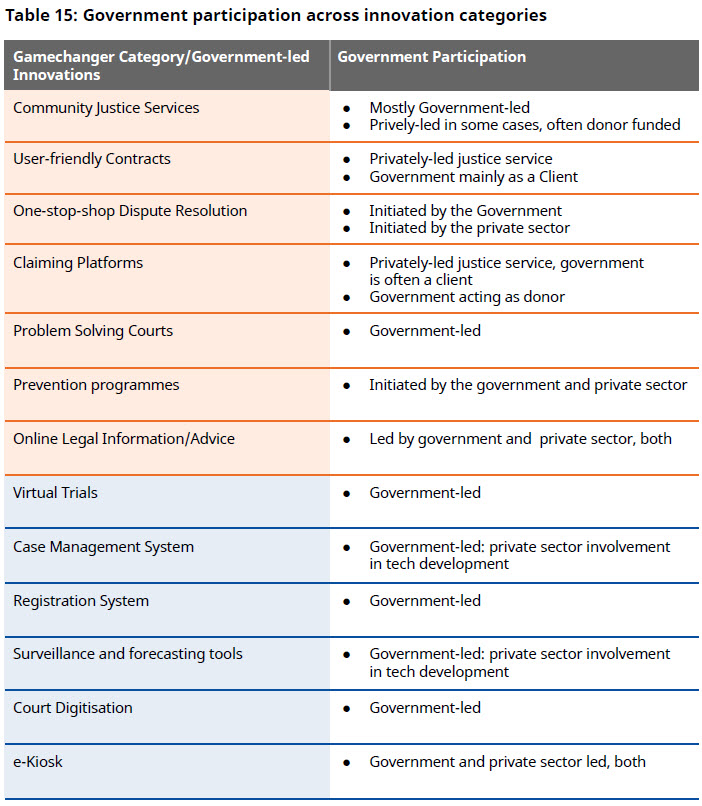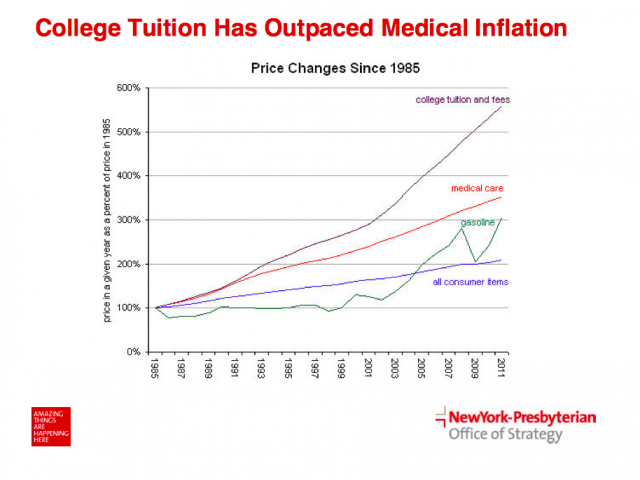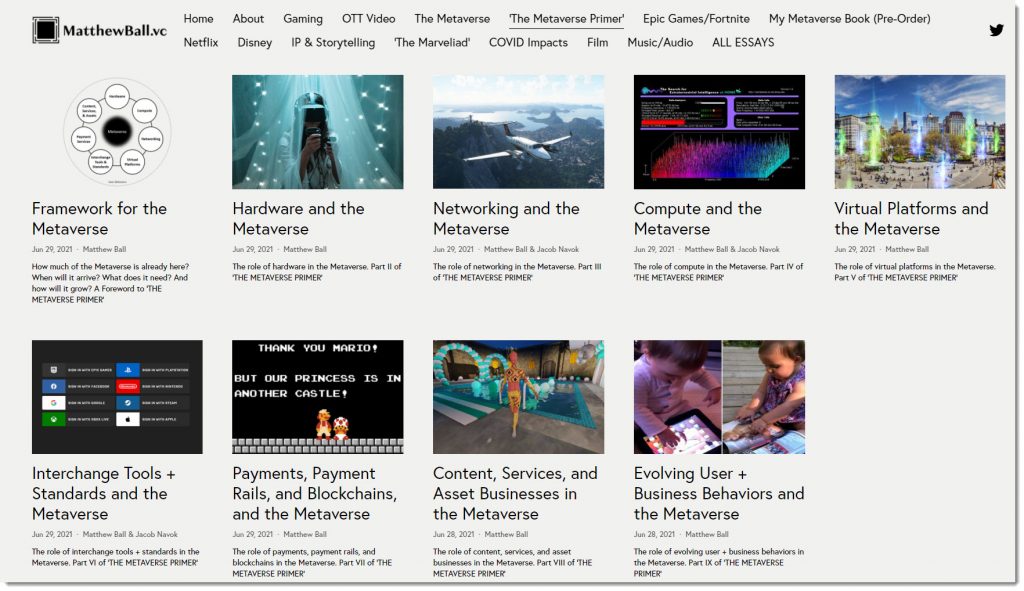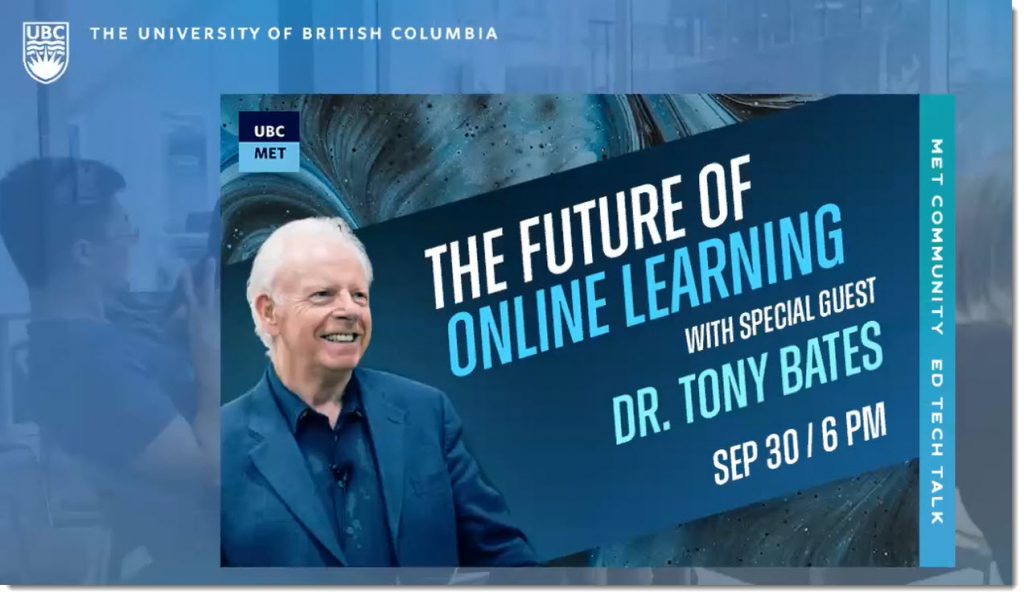Excerpt from “Use of digital technologies in judicial reform and access to justice cooperation — from HiiL (The Hague Institute for Innovation of Law)
Why Aren’t Professors Taught to Teach? — from techlearning.com by Erik Ofgang
Professors are experts in their subject matters but many have limited training in actually teaching their students.
Excerpt:
“A lot of faculty are just modeling their instruction after the instruction they’ve received as an undergraduate or graduate student,” says Tanya Joosten, senior scientist and director of digital learning at University of Wisconsin-Milwaukee and the lead of the National Research Center for Distance Education and Technological Advancements.
As a perpetually short-on-time adjunct professor, I understand those who worry about mandatory training and required course reviews, but Pelletier stresses that she’s advocating for a more organic shift and that a top-down approach isn’t best. “That’s not as collaborative and generative as really just embracing that we have these two different kinds of experts, one type of expert is an expert in their subject, and the other expert is an expert in teaching and learning,” she says. More attention is needed to meld these two kinds of expertise.
From DSC:
It’s not just that colleges and universities are big business — if you have any remaining doubts about that perspective, take a moment to look at this new, interactive database to see what I mean. But it’s also that this type of business often rewards research, not teaching. And yet the students over the last several decades have continued to pay ever-increasing prices for skilled researchers, instead of increasingly skilled teachers.
Image from Inside Higher Ed
Would people put up with this with other types of purchases? I don’t think so. I wouldn’t want to…would you? Would we like to pay for something that we aren’t getting — like paying for all the extra options on a new car, but not getting them?
What goes around, comes around.
But by allowing this to have occurred, a backlash against the value of higher education has been building for years now. In many learners’ minds, they are questioning whether it’s worth taking on (potentially) decades’ worth of debt. At a minimum, the higher the price of obtaining degrees and/or other credentials becomes, the less Return on Investment (ROI) is realized by the learners (i.e., the purchasers of these goods and services). So while getting a degree is often still worth it, the ROI is going down. And this doesn’t address how relevant/up-to-date the educations are that these learners are receiving, which the employers out there will take issue with.
From an Instructional Designer’s perspective, it isn’t just time that’s the issue here. There continues to exist a tiered hierarchy within higher education. Faculty see themselves as more knowledgeable because they are teaching and because they are the Subject Matter Experts (SMEs). But they are not expert teachers. Many full-time faculty members don’t listen to people who are knowledgeable in the learning science world, and they often don’t value that expertise. (This can be true of administrators as well.) But when a fellow faculty member (i.e., their “true peer” from their perspective) suggests the same idea that Instructional Designers have been recommending for years, they suddenly open their eyes and ears to see and hear this seemingly new, wonderful approach.
Some possible scenarios
Thus, a wave has been building against traditional institutions of higher education — readers of this blog will have picked up on this years ago. Once alternatives significantly hit the radar — ones that get the learners solid, good-paying jobs — there could be a mass exodus out of what we think of as traditional higher education. At least that’s one potential scenario.
For example, if a next-generation learning platform comes along that offers teams and individuals the ability to deliver lifelong learning at 50% or more off the price of an average degree, then be on the lookout for massive change. If professors and/or teams of specialists — those who are skilled in instructional design and teaching — can go directly to their learners — it could be an interesting world indeed. (Outschool is like this, by the way.) In that scenario, below are two potential methods of providing what accreditation agencies used to provide:
- Obtaining the skills and competencies being requested from the workplace to “pass the tests” (whatever those assessments turn out to be)
- Voting a course up or down (i.e., providing crowd-sourced rating systems)
Other possible scenarios
Another scenario is that traditional institutions of higher education really kick their innovation efforts into high gear. They reward teaching. They develop less expensive methods of obtaining degrees. They truly begin delivering more cost-effective means of obtaining lifelong learning and development “channels” for educating people.
And there are other possible scenarios, some of which I could think of and many I would likely miss. But to even ask the solid and highly-relevant question as plainly stated in the article above — Why Aren’t Professors Taught to Teach? — that is something that must be dealt with. Those organizations that use a team-based approach are likely to be able to better answer and address that question.
Teaching Tip Infographics — from scholarlyteacher.com
Also see Matthew Ball’s Metaverse Primer (excerpt below from this page) — with thanks to Annie Zhang for this resource:
“The Metaverse is a massively scaled and interoperable network of real-time rendered 3D virtual worlds which can be experienced synchronously and persistently by an effectively unlimited number of users with an individual sense of presence, and with continuity of data, such as identity, history, entitlements, objects, communications, and payments.”
Jacob Navok: Computing and Network Needs of the Metaverse — from hellometaverse.fm by Annie Zhang
Excerpt:
to progress towards this vision of the metaverse, jacob is focused on tackling the hard problem of improving concurrency. how do you get millions of people to concurrently be participating and interacting in one live experience with no lag?
he breaks this down the problem into two components:
-
limitations of the traditional network to handle multiplayer experiences: coordinating, say, positional data of where you and all the other players in a game, gets very complicated, especially when latency needs to be low. meaning, if you want to see everything that everyone is doing at all times, coordinating the traffic of that data is very difficult
-
with more connection, internet speed slows: the internet was not built for true real time communication, but rather optimized for cost and routing efficiency. when you load a fb page, it’s okay if it takes 10 milliseconds, but when you are in a shooting game, a delay of 10 milliseconds is a matter of life or death
Everything You Need To Know About The Metaverse — from protocol.com by Janko Roettgers
Excerpt:
Silicon Valley has a new favorite buzzword: Ever since Mark Zuckerberg announced earlier this year that Facebook’s future would be in the metaverse, everyone has been rushing to figure out what a metaverse even is. And when Facebook rebranded as Meta in October, metaverse fever swept the tech industry. From Microsoft to Nvidia, every company is suddenly in the metaverse business, and seemingly overnight, countless people became metaverse experts.
But what actually is the metaverse? Why does it matter, and who needs to worry about it? If the metaverse is truly “the next chapter for the internet,” as Zuckerberg put it, it’s important to understand and define it so as not to be caught flat-footed when (or if) the metaverse wave catches on.
How to Support Students and Families through Technology and Innovation — from thejournal.com by Jeremy Davis
Excerpt:
Here are just a few district-wide innovations that resulted from the pandemic:
- Worked with our local public access television station to broadcast district updates and educational resources. We contracted with Discovery Education to post some of their content to local channel 3 for students without home Internet access, and we built a television studio where our Innovation team worked with district teachers to produce content for local cable from 8–3 every week day.
DC: Which reminds me of this idea/graphic:

- Students were provided with Internet hotspots to ensure every student in the district could access the content and the video conferencing lessons with their teachers.
- The Educational Services department created an amazing curriculum and summer school program where students could log in and complete curricular activities as enhancements to the curriculum and throughout the summer.
- Created videos of “how” we could do both live and online teaching at the same time to help teachers feel more comfortable with the new way of teaching.
What if we taught listening as an active skill?#GSWhatIf: https://t.co/UDjwAhcwAK
— Daniel Christian (he/him/his) (@dchristian5) November 9, 2021
From DSC:
Just because we have ears doesn’t mean we are actually hearing someone. And just because we have eyes doesn’t mean we are actually seeing someone.
Supporting Student Accessibility: Digital Equity | Special Needs & More — from Tech & Learning | November 2021
From DSC:
I was reading about a Ph.D. who was currently doing some research into the science of learning. This person had been teaching in a School of Education for years, but just (relatively) recently embarked on a Ph.D. During this person’s research, they came across a lot more information regarding the science of learning.
If this was true with someone who had been in education for years (and I can relate to that as well), it made me wonder:
- How can we better get the word out to our learners re: how they can maximize their Return On Investment (ROI) from their studying time and efforts…?
Then I thought, why couldn’t we put these tips directly into our banners on our CMS’s and LMS’s and/or link our banners to some other web pages/resources that provide such best practices and tips for our learners!?! This could occur within the corporate training world as well.
Examples:


Along these lines, we should have 11×17 (or larger) posters like this plastered in every hallway of every learning space out there:
A Crusade to End Grading in High Schools — from washingtonpost.com by Thomas Toch and Alina Tugend; with thanks to Ryan Craig for this resource
One educator is leading an effort to evaluate students differently. Can it catch on?
Excerpt:
He envisioned schools where students learned math, history and science not as isolated subjects in classroom-bound courses but while working together to address real-world issues like soil conservation, homelessness and illegal immigration. Such learning would make schooling more meaningful for students and thus more engaging, Looney believed. It would let students demonstrate more talents to colleges, holding out the prospect of a wider, more diverse range of students entering higher education’s top ranks.
The existing high school transcript, however, with its simple summary of courses and grades, wouldn’t do justice to the interdisciplinary, project-based learning he wanted. It wouldn’t capture students’ creativity, persistence and other qualities. Looney needed a radically different way to portray students’ high school experiences, one that replaced grades with a richer picture. But he didn’t know what it was.
Today, 275 private high schools and 125 public schools are part of the nonprofit Mastery Transcript Consortium (MTC). They are in various stages of designing and launching the transcript — and working to make Looney’s radical vision a reality. Started in 2017, the organization is expanding rapidly.
How to Get Students to Watch Your Videoshttps://t.co/m2EeDAkHqq pic.twitter.com/L8mMQIsXqg
— Daniel Christian (he/him/his) (@dchristian5) November 1, 2021
DC: I hope this is being covered now in H.S.; + get one setup early.
“A power of attorney is a legal document authorizing a person to make financial or health care decisions on behalf of another. The person who gives this authorization is the grantor.”https://t.co/bMvMDQ4F7s
— Daniel Christian (he/him/his) (@dchristian5) October 28, 2021
Along these lines, also see:
- What Steps Should I Take Immediately Following a Work Accident? — from legalreader.com by Michael Davis
From DSC:
Again, this is the type of thing that would be very helpful to learn about in high school.
An excerpt from Eva Keiffenheim’s Learn Letter re: A New Education Paradigm (emphasis DSC)
Here are a couple of underlying assumptions within our current education paradigm:
- assessment through standardized testing and grades
- outcome-focus on academic achievements
- the purpose of education is to produce future workforce
- teachers and professors are the unique source of knowledge
- an inherent dominance (adults > children; professionals > students)
- lectures and listening are a valid form of learning
- subjects exist in hierarchies (math, languages > art, music)
- content should be delivered in discrete subjects
I invite you to question the current paradigm: How would schools and universities look like so that all young people can flourish?
From DSC:
Eva’s reflections remind me of what I was trying to say the other day about how ideas start out as fragile…but if they take hold, they become very powerful. Today’s education paradigms are a great example of that. These paradigms have deep roots that are very hard to change.
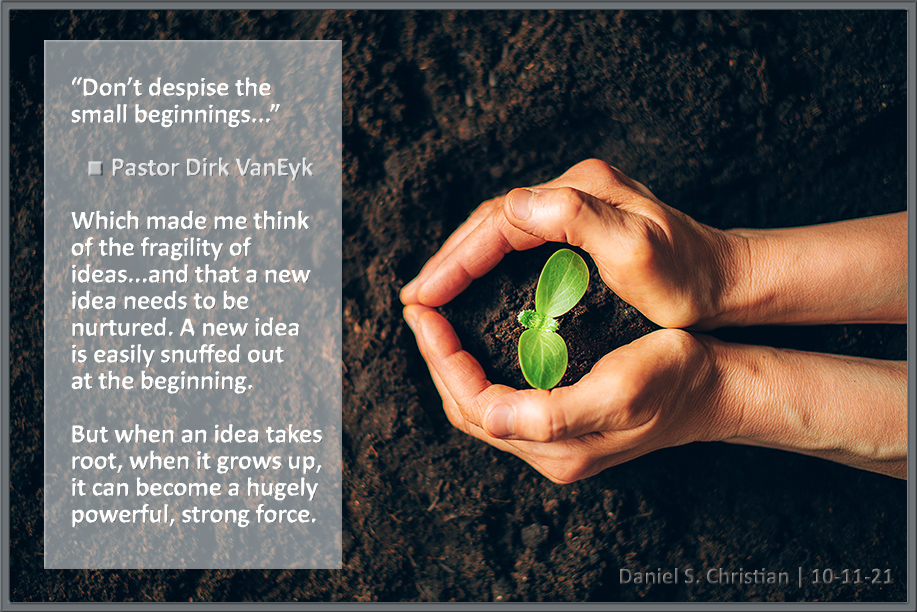
Why we need some humility about online learning – and about face-to-face teaching — from tonybates.ca by Tony Bates
Excerpt:
Those of us who have been fighting to get online learning accepted over the last 20-25 years have argued strongly the merits of online learning. We have argued that not only can it increase access, especially for older, working and lifelong learners, but it can also teach as well, and under certain circumstances, even better than face-to-face teaching. Covid-19 in particular showed the value of online learning, allowing students to continue their learning, even during a pandemic.
The limits of online learning
However, Covid-19 also taught us that online learning has its limits. When there was no access to face-to-face learning, we found that online learning was not able to help certain students. We also found that there are important aspects of face-to-face or campus based learning that cannot easily be replaced by online learning. Let’s look at some of these limitations.
We need to not only accept that both online learning and face-to-face teaching have equal value, but also to strive to understand what each does best. This will vary by subject matter, by types of students, and by instructors’ training and experience. We all have a lot to learn.
Also from Tony, see:
Americans Need a Bill of Rights for an AI-Powered World — from wired.com by Eric Lander & Alondra Nelson
The White House Office of Science and Technology Policy is developing principles to guard against powerful technologies—with input from the public.
Excerpt (emphasis DSC):
Soon after ratifying our Constitution, Americans adopted a Bill of Rights to guard against the powerful government we had just created—enumerating guarantees such as freedom of expression and assembly, rights to due process and fair trials, and protection against unreasonable search and seizure. Throughout our history we have had to reinterpret, reaffirm, and periodically expand these rights. In the 21st century, we need a “bill of rights” to guard against the powerful technologies we have created.
Our country should clarify the rights and freedoms we expect data-driven technologies to respect. What exactly those are will require discussion, but here are some possibilities: your right to know when and how AI is influencing a decision that affects your civil rights and civil liberties; your freedom from being subjected to AI that hasn’t been carefully audited to ensure that it’s accurate, unbiased, and has been trained on sufficiently representative data sets; your freedom from pervasive or discriminatory surveillance and monitoring in your home, community, and workplace; and your right to meaningful recourse if the use of an algorithm harms you.
In the coming months, the White House Office of Science and Technology Policy (which we lead) will be developing such a bill of rights, working with partners and experts across the federal government, in academia, civil society, the private sector, and communities all over the country.
Technology can only work for everyone if everyone is included, so we want to hear from and engage with everyone. You can email us directly at ai-equity@ostp.eop.gov.
DC: Saw it last night w/ our daughters. This would a great movie for middle schoolers & high schoolers to see & discuss. I enjoyed it. The impact of social media, algorithms, Silicon Valley personalities/dynamics, privacy & data-related issues, friendship. https://t.co/LAqvNuqUnk
— Daniel Christian (he/him/his) (@dchristian5) October 25, 2021









